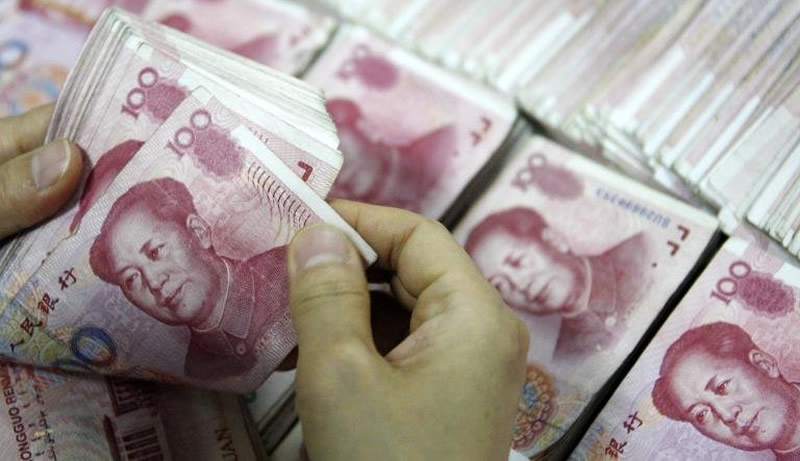China s central bank announced Sunday it would cut the level of funds that commercial banks must hold in reserve by one percentage point, the second such move this year to boost lending.
[contentblock id=1 img=adsense.png]
The move, effective Monday, comes days after the world s second largest economy reported its worst quarterly growth figure for six years.
In a statement on its website, the People s Bank of China (PBoC) said it will give an additional one-percentage-point RRR cut to banks for agricultural services and a further two-percentage-point cut to the Agricultural Development Bank of China. It will also give a 0.5 percent cut to certain banks that give agricultural or small-business loans. The cuts will “further enhance the ability of financial institutions to support restructuring,” the PBoC said. The reduction in the reserve requirement ratio (RRR) — the amount of cash banks must keep on hand — follows a similar move in early February, which was the first across-the-board cut since May 2012. China s gross domestic product (GDP) growth slowed to 7.0 percent in the first quarter from 7.3 percent in the final three months of last year, marking the worst result in six years. Growth in industrial output and retail sales slowed in March, while the figure for fixed asset investment also weakened in the first three months of the year, raising expectations of further efforts to shore up the economy.
[contentblock id=2 img=gcb.png]
Reducing the RRR is a stimulatory measure as it increases the amount of money banks can lend out and thus helps to boost economic activity. Besides the RRR cuts, the central bank has lowered benchmark interest rates twice since November as the Asian giant s economic growth slowed last year to a 24-year low. China s economy expanded an annual 7.4 percent in 2014, its worst performance since 1990.
Read More: World Trade Center Opens for Business
Economic data have continued to disappoint this year, raising alarm bells that growth is weakening too quickly, despite authorities acceptance of a more sustainable growth model that places greater emphasis on consumer spending to drive expansion. The PBoC carried out targeted RRR cuts last year, part of a series of “mini-stimulus” steps introduced from April when growth began to slow. Last month China lowered its GDP growth target to “approximately seven percent” for this year from last year s objective of about 7.5 percent.
[contentblock id=3 img=adsense.png]
The PBoC cut benchmark deposit and lending interest rates earlier this year for the second time in three months, citing “historically low inflation”. Consumer inflation held steady at 1.4 percent in March from February. It struck a more-than-five-year low in January of 0.8 percent, but a further 4.6 percent percent plunge in factory gate costs — a leading indicator for retail prices — compounded nagging worries that China could face debilitating deflation. Leaders in March also set the consumer price index objective at “around three percent” for this year, down from last year s target of about 3.5 percent. Actual consumer prices rose 2.0 percent in 2014.














